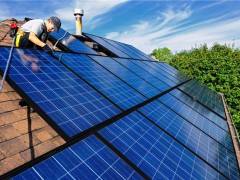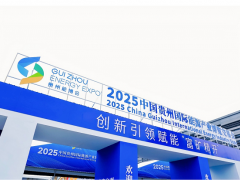???? 據(jù)美國(guó)油價(jià)網(wǎng)報(bào)道,在評(píng)估了今年全球最有前途的專注石油的勘探井之后,現(xiàn)在是確定今年全球最有潛力的天然氣初探井的時(shí)候了。要忘記并放棄去年帶來(lái)的所有困難并不容易——與2019年相比,去年全球天然氣產(chǎn)量下降了4%,各大洲的資本支出都被削減,勘探井通常被推遲,直到外部條件改善。在某些情況下,新冠肺炎疫情大流行引發(fā)的市場(chǎng)蕭條產(chǎn)生了意想不到的后果,直接或間接影響了勘探鉆井。去年并非一切都是負(fù)面的,盡管人們需要將成功的概念相對(duì)化——例如,去年的油氣價(jià)格暴跌使天然氣需求免于更大幅度的下降,但是低價(jià)格使增加天然氣發(fā)電在經(jīng)濟(jì)上變得可行。
????有趣的是,由于去年全球LNG的總體需求量實(shí)際上有所增加,達(dá)到了3.62億- 3.63億噸的歷史最高水平,因此專注于LNG項(xiàng)目保持其市場(chǎng)份額的可能性更高。與此同時(shí),美國(guó)天然氣生產(chǎn)商和歐洲主要管道天然氣供應(yīng)商俄羅斯天然氣工業(yè)股份公司(俄氣)證實(shí),就多元化出口市場(chǎng)而言,流動(dòng)性和靈活性較低的天然氣生產(chǎn)受到的影響明顯更大。也就是說(shuō),人們可能會(huì)認(rèn)為,去年的天然氣勘探井主要是用“內(nèi)心的想法”(arrière-pensée)鉆探的,而事實(shí)并非如此。無(wú)論是阿聯(lián)酋的杰貝阿里氣田,還是南非的布魯帕達(dá)氣田,甚至可能是土耳其的薩卡亞氣田,去年發(fā)現(xiàn)的大部分天然氣都將為那些已經(jīng)習(xí)慣了天然氣進(jìn)口的經(jīng)濟(jì)體提供急需的天然氣,并創(chuàng)造出自給自足的新局面。
????我們分析了全球今年最熱門的天然氣遠(yuǎn)景構(gòu)造,并為您列出了其中的前五個(gè),充分認(rèn)識(shí)到在經(jīng)濟(jì)蕭條時(shí)期,最高影響井可能來(lái)自高風(fēng)險(xiǎn)的初探井。
????1. 斯庫(kù)拉托夫斯卡雅-2井 (俄羅斯)
????斯庫(kù)拉托夫斯卡雅-2井是俄氣在位于北極喀拉海的斯庫(kù)拉托夫斯卡雅區(qū)塊的第二口探井,最有可能獲得今年最大的天然氣發(fā)現(xiàn)。有幾個(gè)理由可以證實(shí)這一說(shuō)法。首先,盡管斯庫(kù)拉托夫斯卡雅區(qū)塊位于海上,但它與世界上最大的天然氣田博瓦年科夫大氣田相鄰。其次,以前在喀拉海的所有鉆探活動(dòng)都發(fā)現(xiàn)了大量天然氣儲(chǔ)量;最新一個(gè)發(fā)現(xiàn)是斯庫(kù)拉托夫斯卡雅-1井,此井發(fā)現(xiàn)了2020億立方米的3P儲(chǔ)量,這個(gè)新氣田很快被更名為“75 Let Pobedy”,以紀(jì)念蘇聯(lián)在二戰(zhàn)中的勝利。雖然俄氣明顯不急于開(kāi)發(fā)成本高昂的北極氣田,并打算在2030年后投產(chǎn)這些氣田,但俄氣仍在積極推進(jìn)鉆井,斯庫(kù)拉托夫斯卡雅-2井的鉆井作業(yè)預(yù)計(jì)將在今年夏季進(jìn)行。
????2.克洛諾斯-1井 (塞浦路斯)
????在2018年全球最大天然氣發(fā)現(xiàn)之一的擁有6.5萬(wàn)億立方英尺天然氣儲(chǔ)量的塞浦路斯卡里普索發(fā)現(xiàn)獲得了無(wú)可爭(zhēng)議的成功以后,道達(dá)爾公司及其合作伙伴埃尼公司(各持有第6號(hào)區(qū)塊50%股份)計(jì)劃在今年下半年開(kāi)鉆克洛諾斯-1初探井。最初這口初探井被假設(shè)在去年4月開(kāi)鉆,然而,COVID-19大流行的嚴(yán)重影響將此井的開(kāi)鉆時(shí)間推遲了一年多。克洛諾斯-1井位于距離塞浦路斯海岸大約150公里的西南部海域,其鉆井作業(yè)將在水深2300米-2400米的海域進(jìn)行,即比卡里普索發(fā)現(xiàn)和格勞科斯發(fā)現(xiàn)還要深幾百米。埃及伊德庫(kù)LNG項(xiàng)目的重啟以及塞浦路斯的發(fā)現(xiàn)與埃及的液化基礎(chǔ)設(shè)施的傳聞表明,如果克洛諾斯-1井在今年晚些時(shí)候獲得發(fā)現(xiàn),它很可能會(huì)作為L(zhǎng)NG在市場(chǎng)推廣。
????3.Rencong-1X井 (印度尼西亞)
???疫情大流行也把印度尼西亞Rencong- 1X井——一口位于蘇門答臘島北部的一個(gè)潛在開(kāi)放邊界上的海上初探井——的開(kāi)鉆時(shí)間推遲到了2021年。擁有51%股份并擔(dān)任作業(yè)者的西班牙雷普索爾公司和擁有49%股份的馬來(lái)西亞國(guó)家石油公司將以迄今為止從未鉆探過(guò)的Tampur碳酸鹽巖地層(上始新統(tǒng)/下漸新統(tǒng))為目標(biāo),估計(jì)擁有4萬(wàn)億立方英尺的天然氣資源。Rencong- 1X井距離蘇門答臘島海岸線40公里,水深1000米-1100米。雷普索爾公司在項(xiàng)目管理上也遇到了不少困難,主要是要提供一艘符合印尼法規(guī)的合適的鉆井船,但現(xiàn)在看來(lái),這些困難都已得到解決。在印尼成熟天然氣產(chǎn)量穩(wěn)步下降的背景下,一個(gè)新的富氣前沿的出現(xiàn)可能會(huì)在北蘇門答臘盆地引發(fā)一場(chǎng)小小的革命。
????4.第9號(hào)區(qū)塊 (黎巴嫩)
????法國(guó)道達(dá)爾公司將設(shè)法克服黎巴嫩有史以來(lái)首次海上鉆井作業(yè)令人失望的結(jié)果,首次海上鉆井作業(yè)在去年2月啟動(dòng)。Byblos-1井位于區(qū)塊9,由于沒(méi)有獲得具有商業(yè)開(kāi)采價(jià)值的油氣資源,Byblos-1井隨后被放棄。今年,道達(dá)爾公司在黎巴嫩海上開(kāi)鉆了第二口至今仍未命名的初探井,有幾個(gè)理由可以相信第二口初探井的鉆井結(jié)果會(huì)比道達(dá)爾公司的先驅(qū)初探井要好。首先,它位于區(qū)塊9的南部,更接近與以色列接壤的海上邊界,有效地毗鄰以色列塔馬爾大氣田,因此塔馬爾砂巖儲(chǔ)集層的遠(yuǎn)景構(gòu)造將高于區(qū)塊4。由于黎巴嫩-以色列海上邊界爭(zhēng)端不斷,運(yùn)營(yíng)商一直對(duì)即將開(kāi)鉆的初探井的確切位置保密,然而,人們可以相當(dāng)自信地認(rèn)為,這口初探井將避免在有爭(zhēng)議的水域鉆探。
????5.姆扎拉巴尼-1井 (津巴布韋)
????在我們排名前5大鉆井項(xiàng)目中,津巴布韋可以說(shuō)是最有爭(zhēng)議的項(xiàng)目,津巴布韋沒(méi)有探明的油氣儲(chǔ)量,經(jīng)常依賴其他鄰國(guó)來(lái)滿足其國(guó)內(nèi)能源需求。然而,今年,由于這個(gè)非洲國(guó)家魯豐薩盆地的評(píng)估活動(dòng)升溫,這種依賴情況可能會(huì)完全改變。SG 4571區(qū)塊的運(yùn)營(yíng)商Invictus能源公司在2020-2021年啟動(dòng)了地震測(cè)量計(jì)劃,目前正開(kāi)始準(zhǔn)備鉆探姆扎拉巴尼-1遠(yuǎn)景構(gòu)造,該遠(yuǎn)景構(gòu)造覆蓋面積超過(guò)200平方公里。這口初探井將在今年10月至11月開(kāi)鉆,總深度超過(guò)4000米,目標(biāo)是確認(rèn)這個(gè)遠(yuǎn)景構(gòu)造的4.5萬(wàn)億立方英尺的潛在資源。據(jù)運(yùn)營(yíng)商稱,SG 4571的總評(píng)估油氣儲(chǔ)量分別為2.94億桶和9.25萬(wàn)億立方英尺。
????李峻 編譯自 油價(jià)網(wǎng)
????原文如下:
????The Top 5 Natural Gas Wildcats Of 2021
????Having assessed the most promising oil-focused exploration wells of 2021, the time has come to do pinpoint this year’s up-and-coming gas wildcats. It will not be easy to forget and let go of all the difficulties that 2020 generated – global gas production decreased by 4% compared to 2019, capital expenditures were cut across all continents, exploration wells were routinely delayed until external conditions improve. In some cases, the COVID-induced market depression has had unexpected consequences that either directly or indirectly impact exploration drilling – look no further than insurgents in Mozambique debilitating the 13mtpa Mozambique LNG project. Not everything was negative in 2020, albeit one needs to relativize the concept of success – for instance, the 2020 oil and gas price slump has insulated gas demand from an even steeper decline as low prices made it financially viable to ramp up gas-powered generation.
????Interestingly, projects focusing on LNG entertained higher odds of keeping their market share as overall global LNG demand actually increased over the course of 2020, attaining an all-time high of 362-363 million tons LNG. Simultaneously, gas production that was less mobile and flexible in terms of diversified outlet markets suffered tangibly more, as attested by US gas producers and Europe’s main pipeline supplier, Gazprom. With this being said, one might assume that exploration wells that were drilled with an arrière-pensée for LNG dominated the 2020 landscape and little could be further from the truth. Be it UAE’s Jebel Ali find, South Africa’s Brulpadda or perhaps even Turkey’s Sakarya, the majority of last year’s discoveries will provide much-needed gas for economies that have gotten used to gas imports, spinning a new story of self-sufficiency.
????We have analyzed the hottest gas prospects of 2021 and present you the Top 5, fully cognizant of the fact that in depressed times the highest impact wells might come from high-risk wildcats.
????1.Skuratovskaya-2 (Russia)
????The most likely candidate for the largest 2021 gas discovery will be Skuratovskaya-2, Gazprom’s second prospecting well in the Skuratovskaya block in the Arctic Kara Sea. There are several reasons corroborating this claim. First and foremost, despite being offshore the Skuratovskaya block is adjacent to the world’s largest gas field, Bovanenkovo. Second, all previous drillings in the Kara Sea have unearthed massive gas reserves; the last of the discoveries was the Skuratovskaya-1 well which unearthed 202 BCm in 3P reserves (the field was quickly renamed “75 Let Pobedy” to commemorate the Soviet Union’s WWII victory). Although Gazprom is evidently not eager to develop cost-heavy Arctic fields and intends to bring them onstream after 2030, it is still pushing forward with drilling, Skuratovskaya-2 is expected to take place in the summer months.
????2. Cronos-1 (Cyprus)
????Following the undisputable success of the 6.5 TCf Calypso discovery in 2018, one of the largest gas finds globally in 2018, Total and its partner ENI (both hold 50% of Block 06) are set to drill the Cronos-1 wildcat in the second half of 2021. Initially the wildcat was assumed to be spudded in April 2020, however, the severe impact of COVID-19 delayed it by more than a year. The well, located to the southwest some 150km off the Cypriot coast, will be drilled in water depths of 2300-2400 meters, i.e. several hundred meters deeper than Calypso and Glaucus. The restart of the Idku LNG and the rumored tying-in of Cypriot discoveries to Egypt’s liquefaction infrastructure indicates that should there be a Cronos discovery in late 2021, it would most probably be marketed as LNG.
????3. Rencong-1X (Indonesia)
????The coronavirus pandemic has also pushed the spudding of Rencong-1X, a potentially frontier-opening offshore wildcat to the north of Sumatra, well into 2021. Repsol (51% stake and operatorship) and Petronas (49%) will target the Tampur Carbonate Formation (Upper Eocene/Lower Oligocene) that has heretofore never been drilled, with estimated resources of 4 TCf. Rencong-1X is located 40km from the Sumatran coastline and will be spudded in water depths of 1000-1100 metres. Repsol has had its fair share of difficulties along the project’s administration, primarily connected to the provision of a suitable drillship all the while complying with Indonesian regulations but now it seems that those travails have been left behind. Against the background of steadily declining mature gas production in Indonesia, the emergence of a new gas-rich frontier might spark a mini-revolution in the North Sumatra Basin.
????4. Block 09 (Lebanon)
????The French major Total will try to overcome the disappointing result of Lebanon’s first-ever offshore wildcat that was spudded in February 2020. Located within Block 09, Byblos-1 turned out to be non-commercial and was subsequently abandoned. This year the drilling of a second wildcat (still unnamed) in Lebanon’s offshore and there are several reasons to believe that it will fare better than Total’s pioneering wildcat. First and foremost, it is located to the south to Block 09, much closer to the maritime border with Israel, effectively abutting the Tamar field, hence the prospects of the Tamar Sandstone reservoirs would be higher than with Block 04. Due to ongoing Lebanese-Israeli maritime border disputes the operator has so far kept the exact location of the forthcoming wildcat shrouded in secrecy, however one can assume fairly confidently that it will avoid drilling in disputed waters.
????5. Mzarabani-1 (Zimbabwe)
????Arguably the most disputable project in our Top 5 ranking, Zimbabwe has no known hydrocarbon reserves and has routinely relied on other neighboring countries to cater for its energy needs. This year, however, might alter that picture completely as appraisal activity heats up in the African nation’s Rufunsa Basin. The operator of the SG 4571 block, Invictus Energy, has had seismic surveying programs in 2020-2021 and now is stating its readiness to drill the Mzarabani-1 prospect in Zimbabwe, a 4-way dip closure spread across more than 200km2. The wildcat will be drilled in October-November 2021 to a total depth deeper than 4000m and will aim to confirm the prospect’s prospective resources of 4.5 TCf. According to the operator, the total assessed reserves of the SG 4571 stand at 9.25TCf and 294 MMbbls. Mzarabani will be Zimbabwe’s second-ever wildcat, the first was drilled in 2018 and deemed dry, only confirming the high-risk nature of Zimbabwean drilling.
免責(zé)聲明:本網(wǎng)轉(zhuǎn)載自其它媒體的文章,目的在于弘揚(yáng)石化精神,傳遞更多石化信息,并不代表本網(wǎng)贊同其觀點(diǎn)和對(duì)其真實(shí)性負(fù)責(zé),在此我們謹(jǐn)向原作者和原媒體致以敬意。如果您認(rèn)為本站文章侵犯了您的版權(quán),請(qǐng)與我們聯(lián)系,我們將第一時(shí)間刪除。







